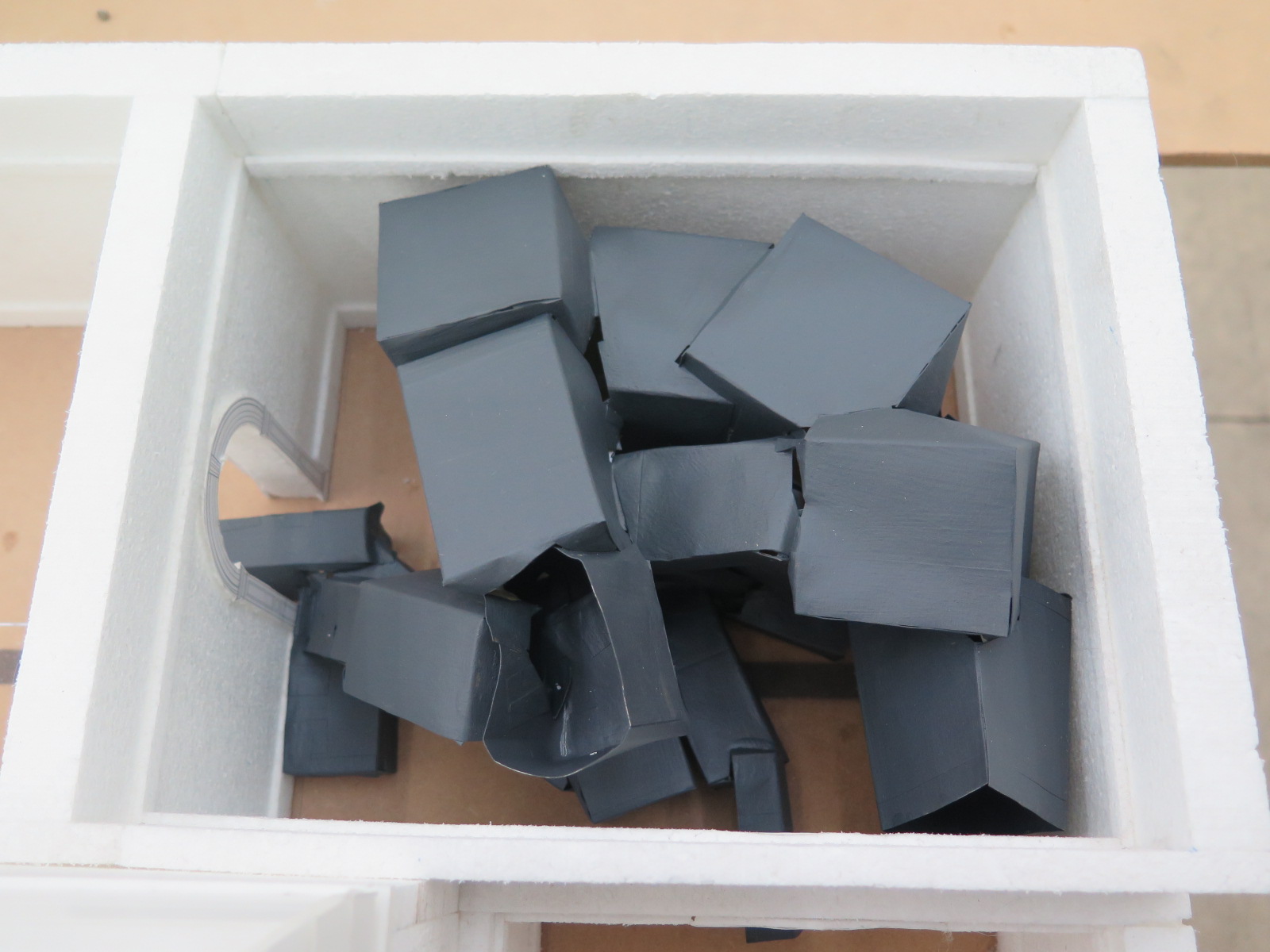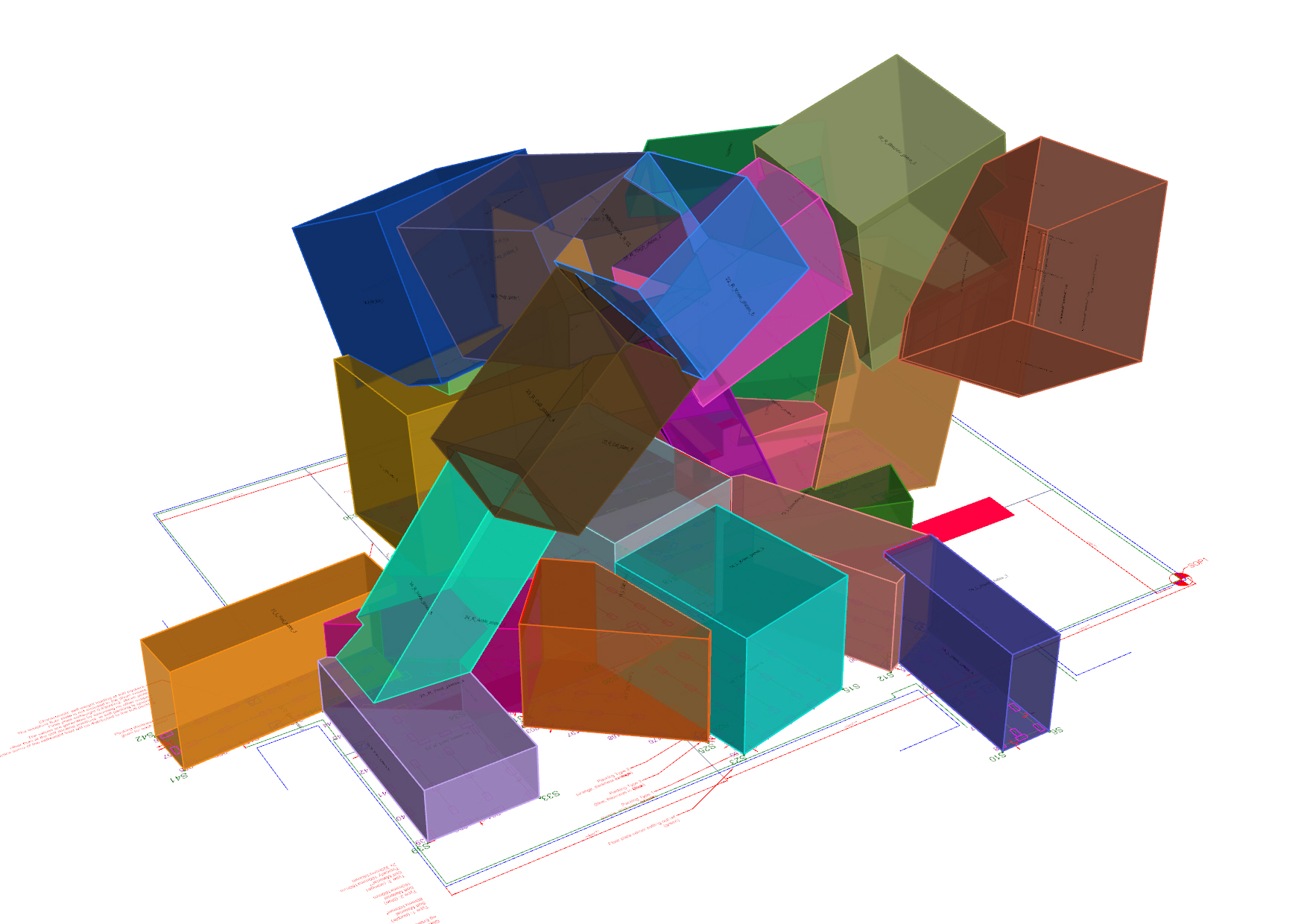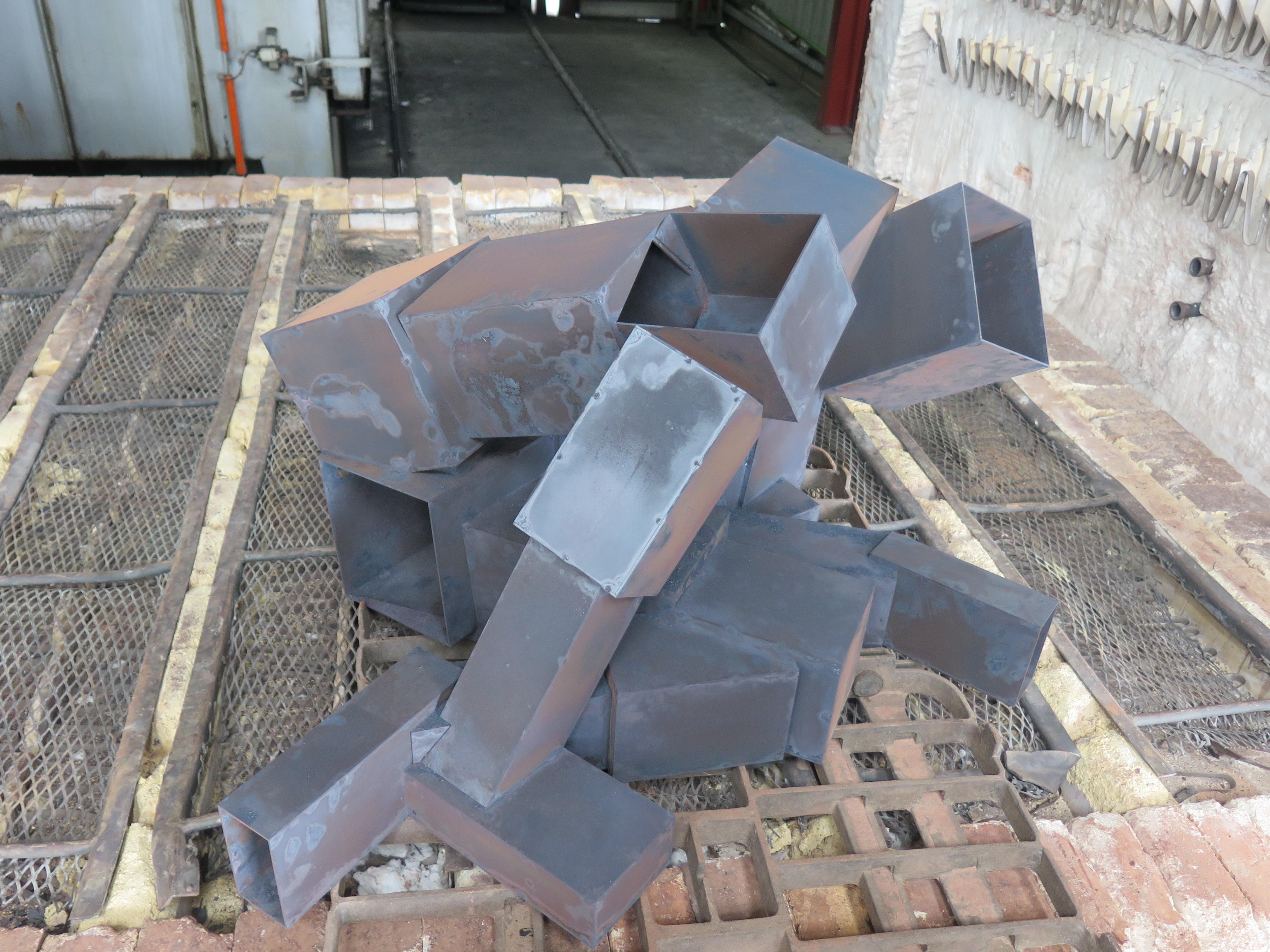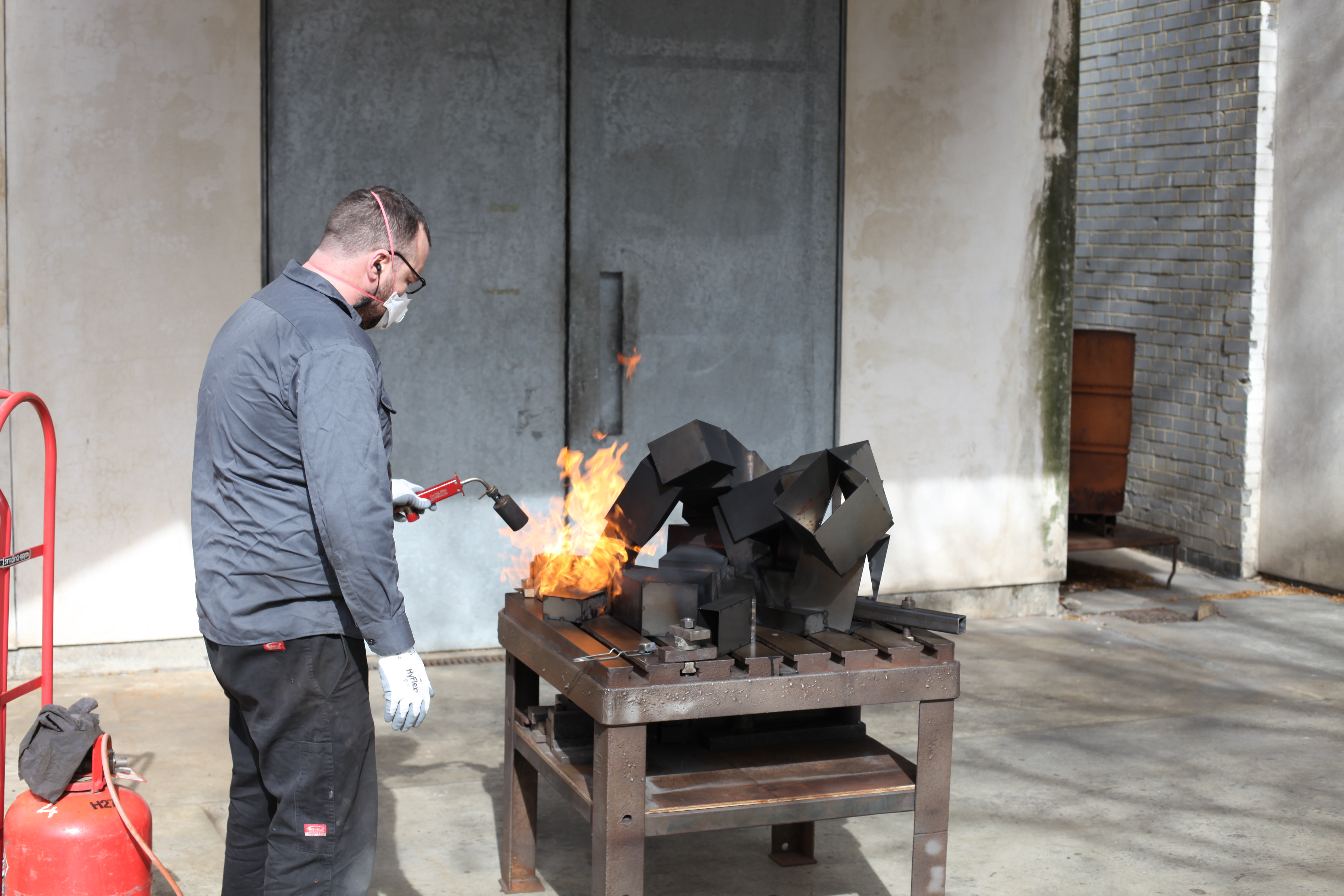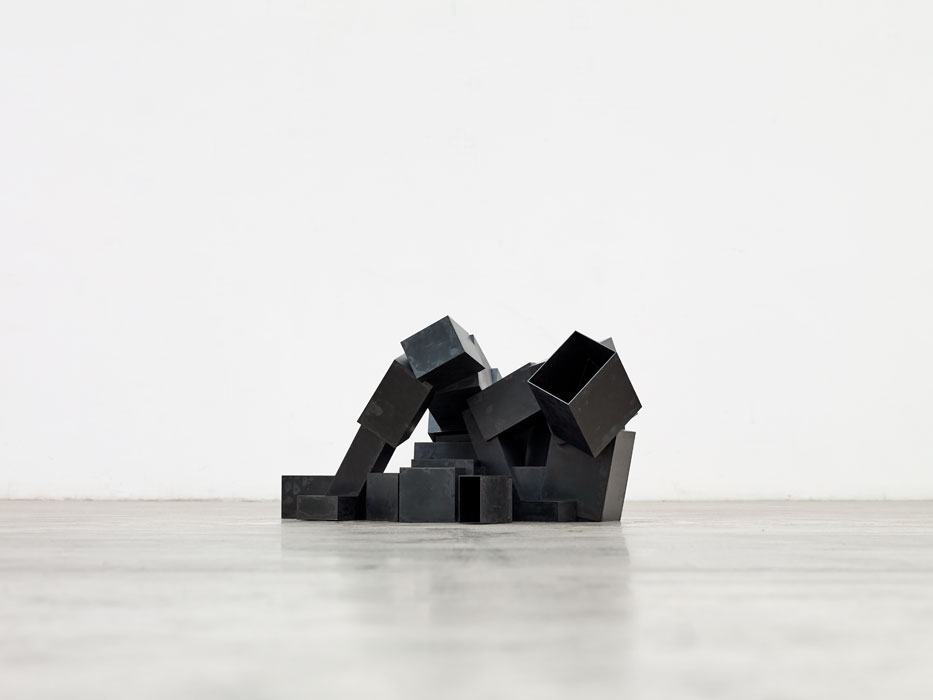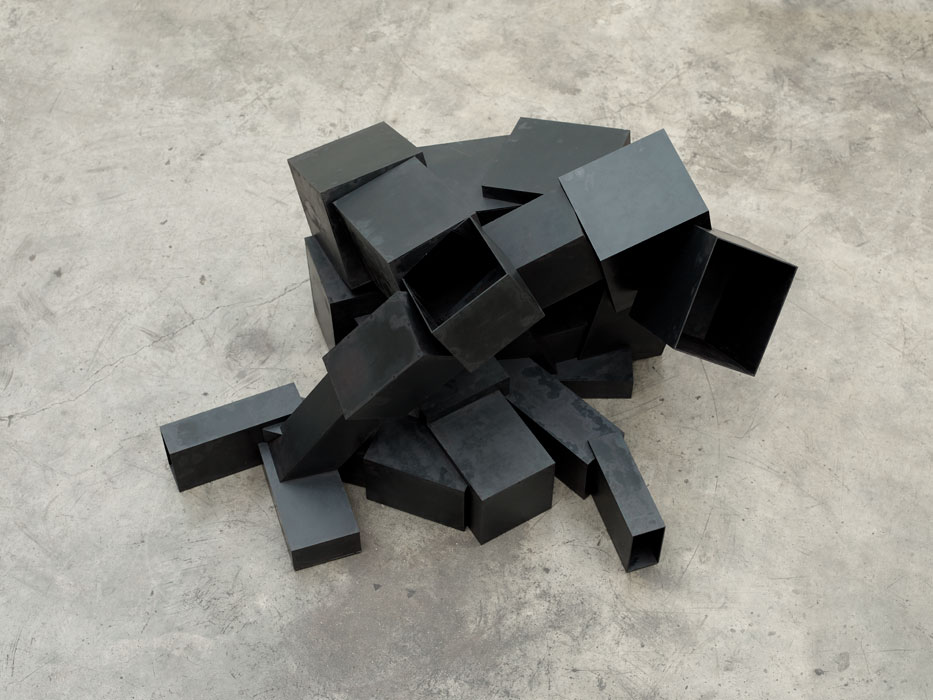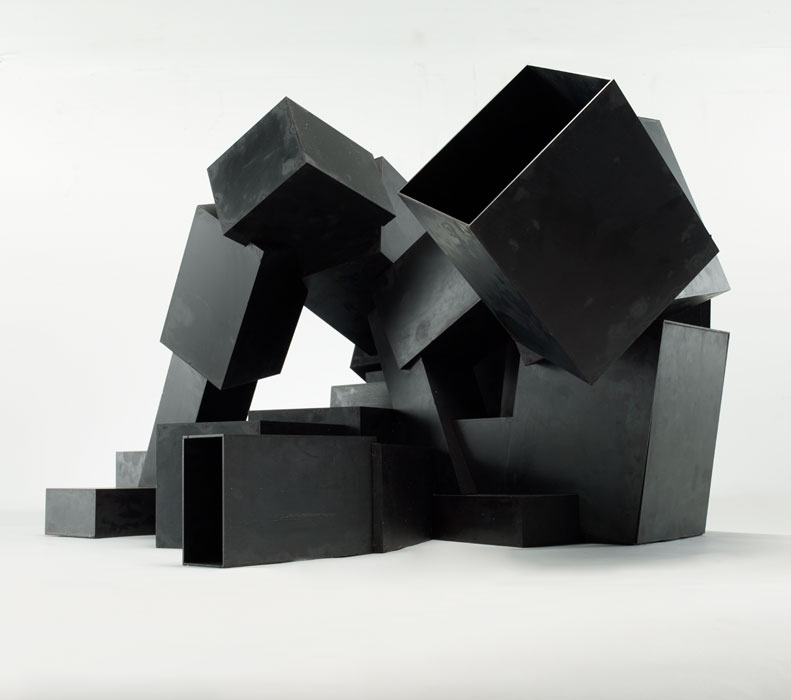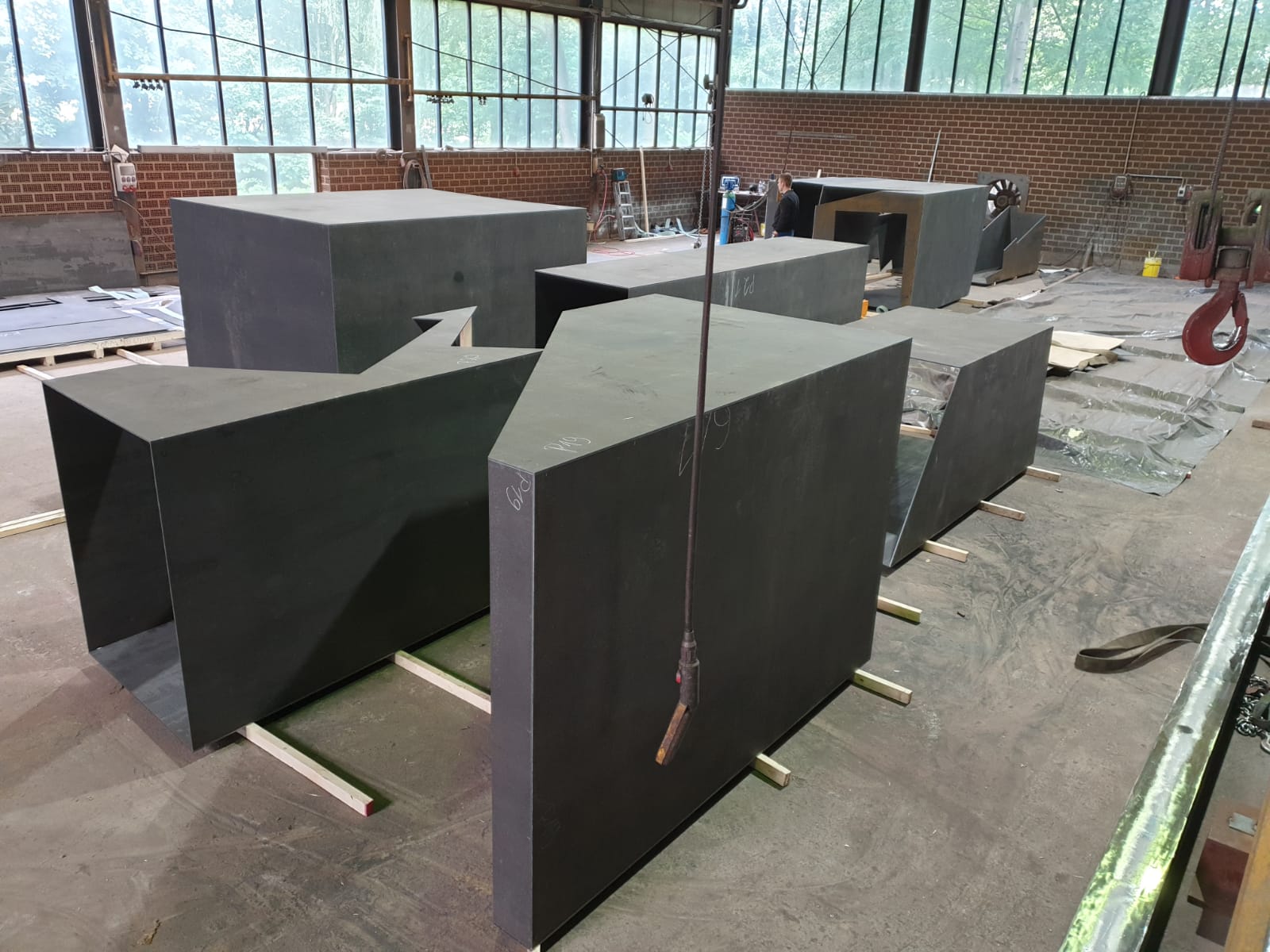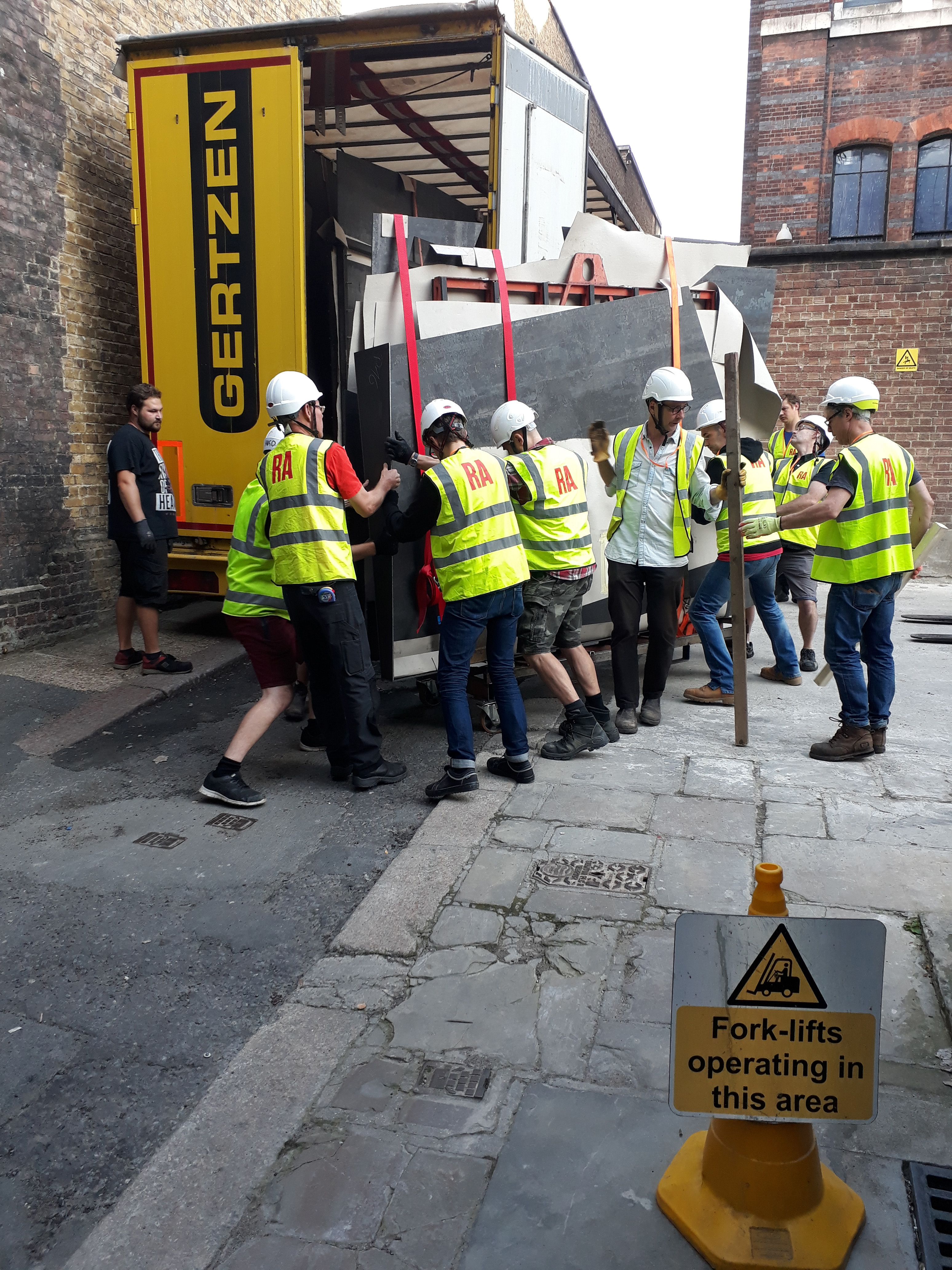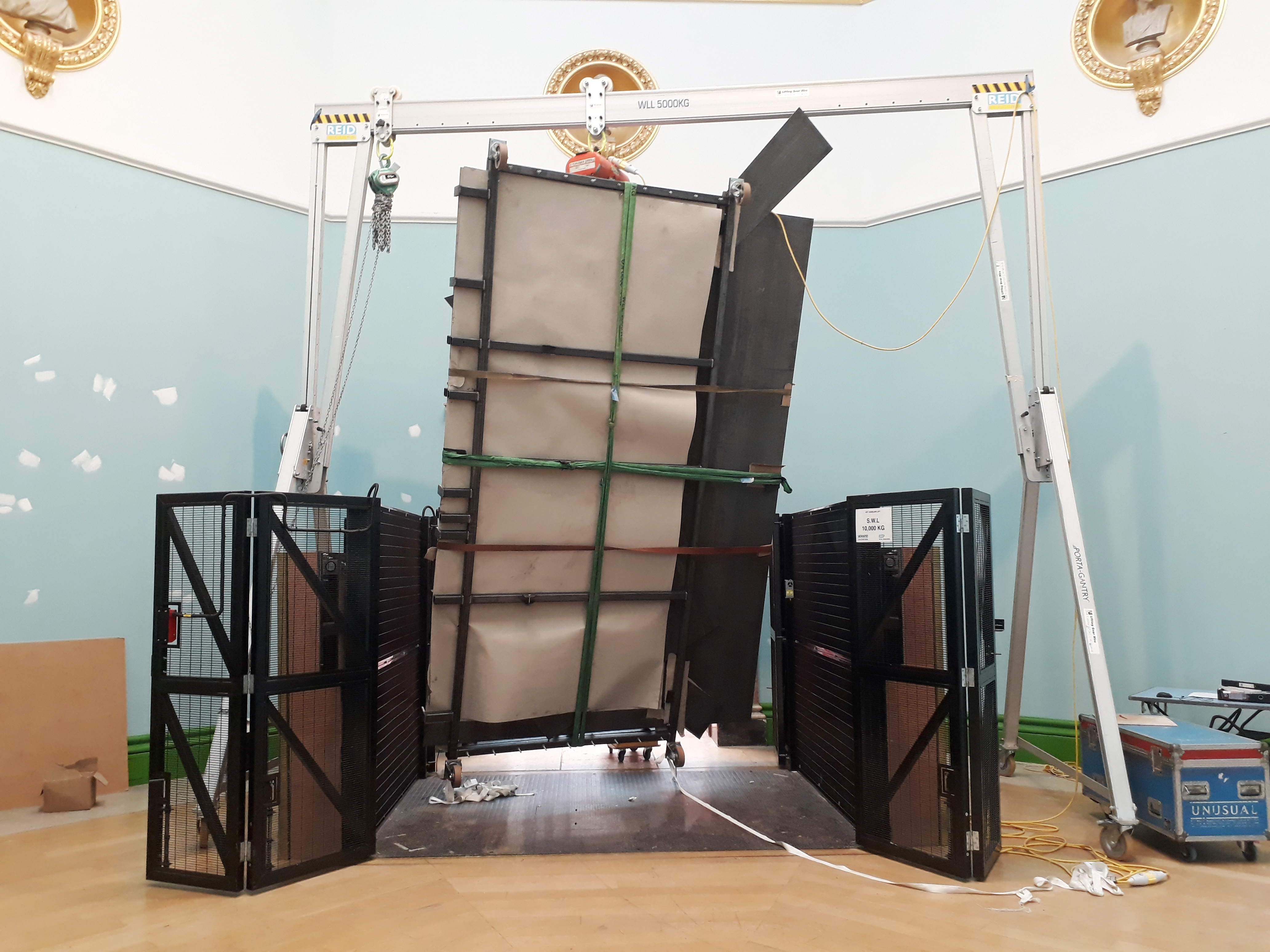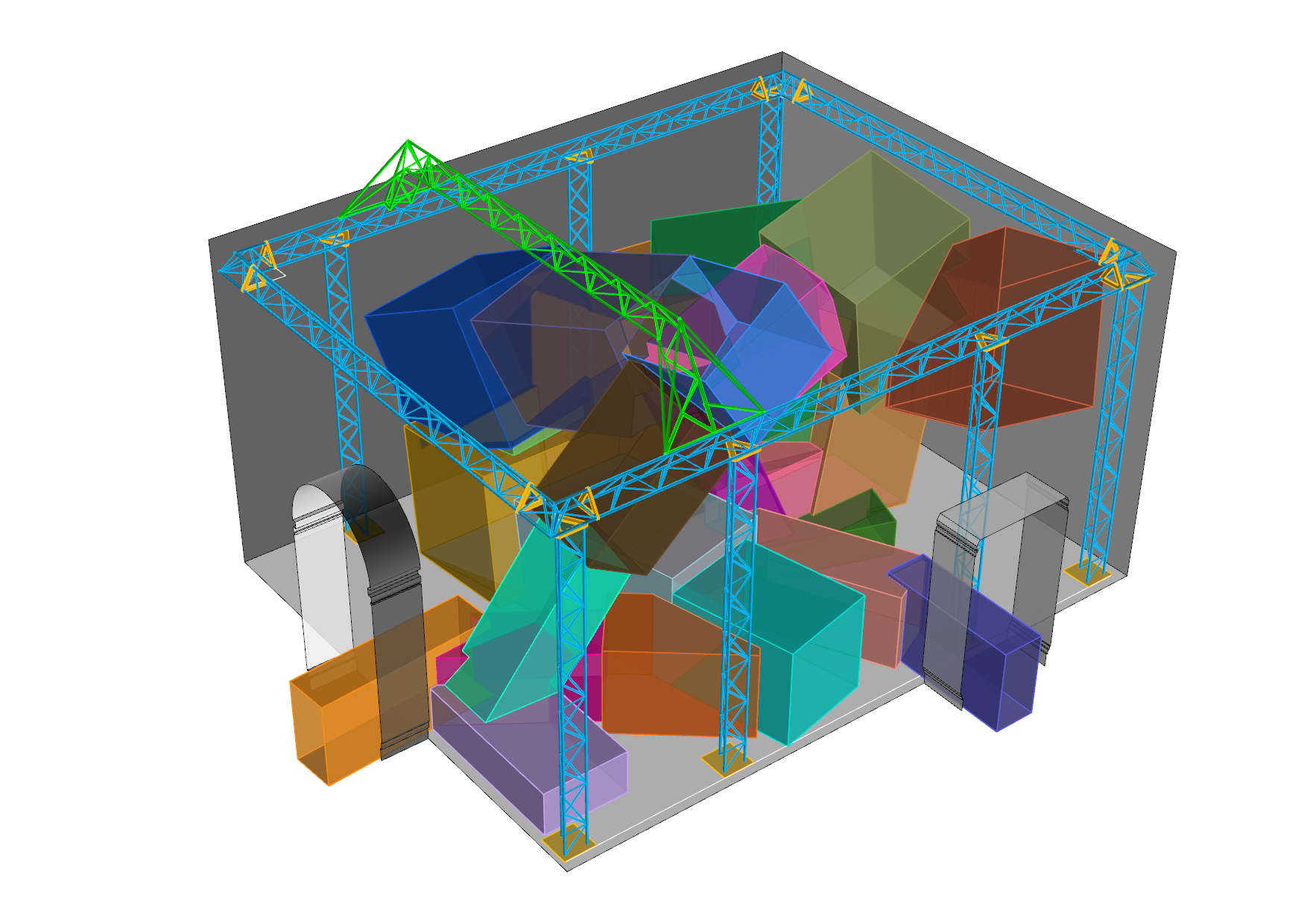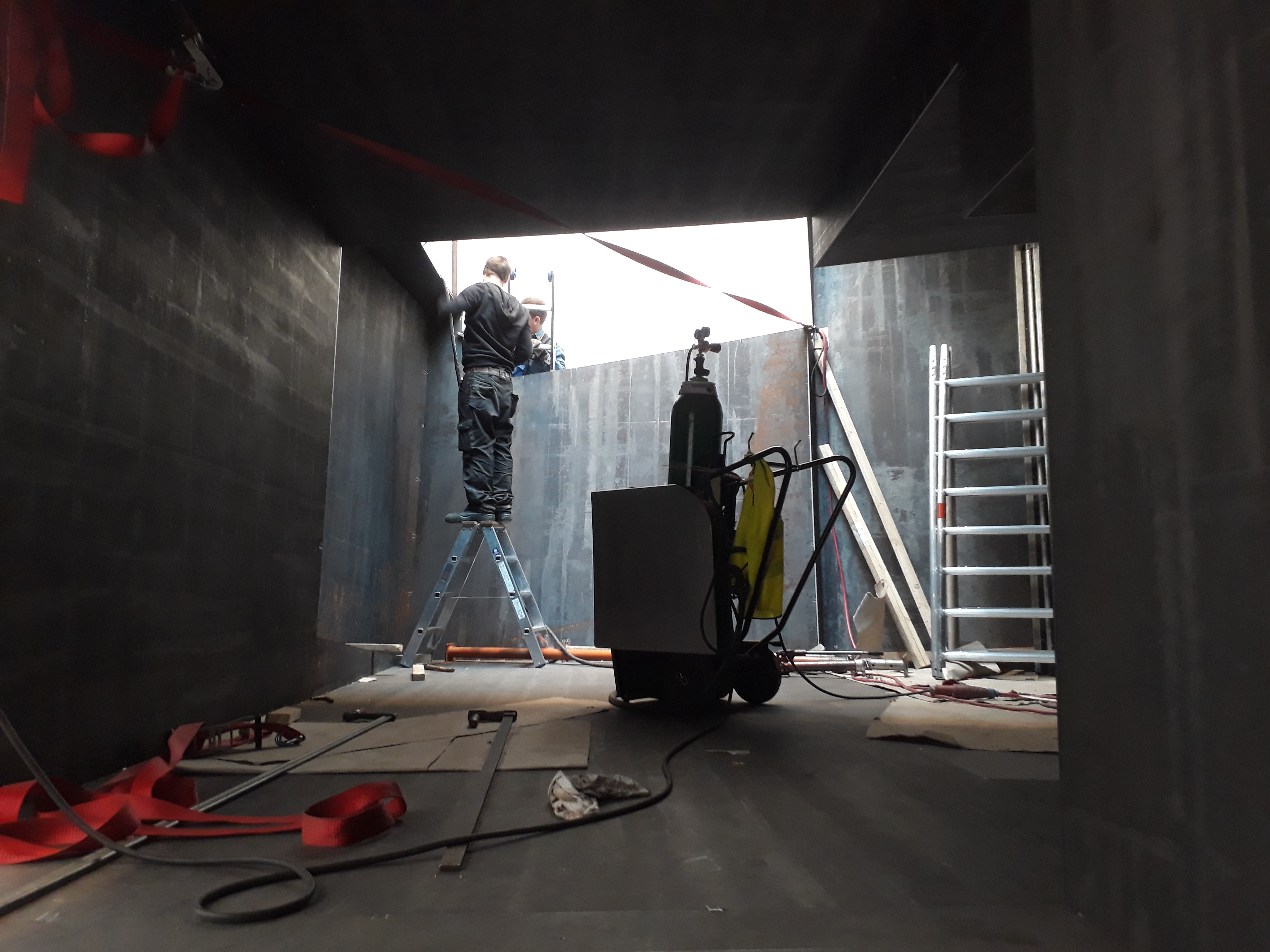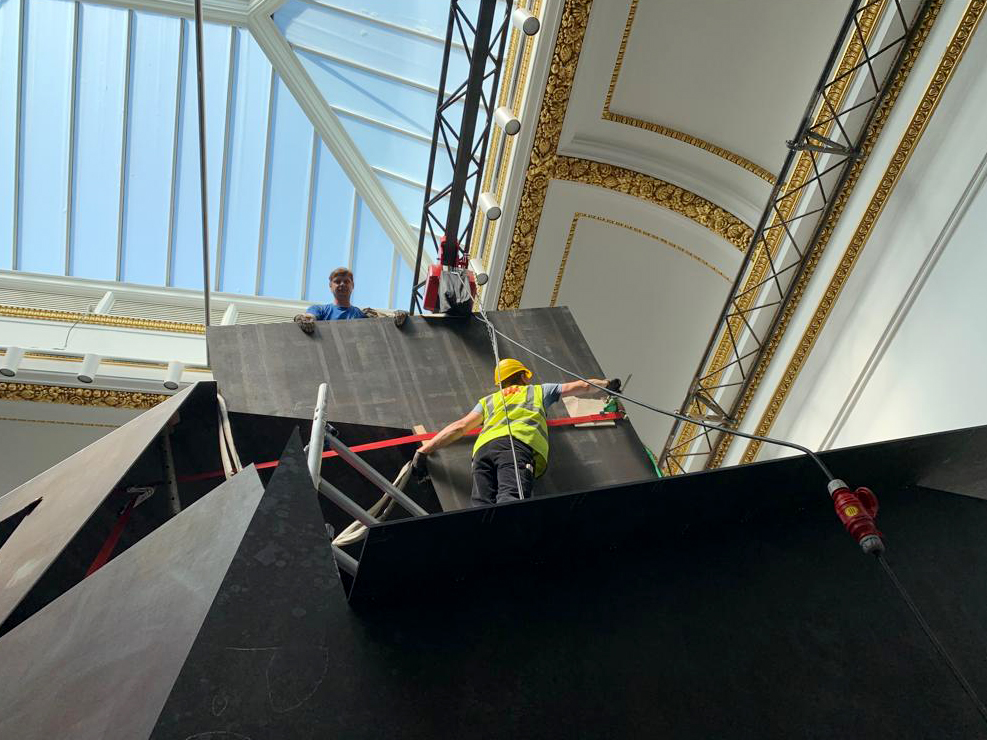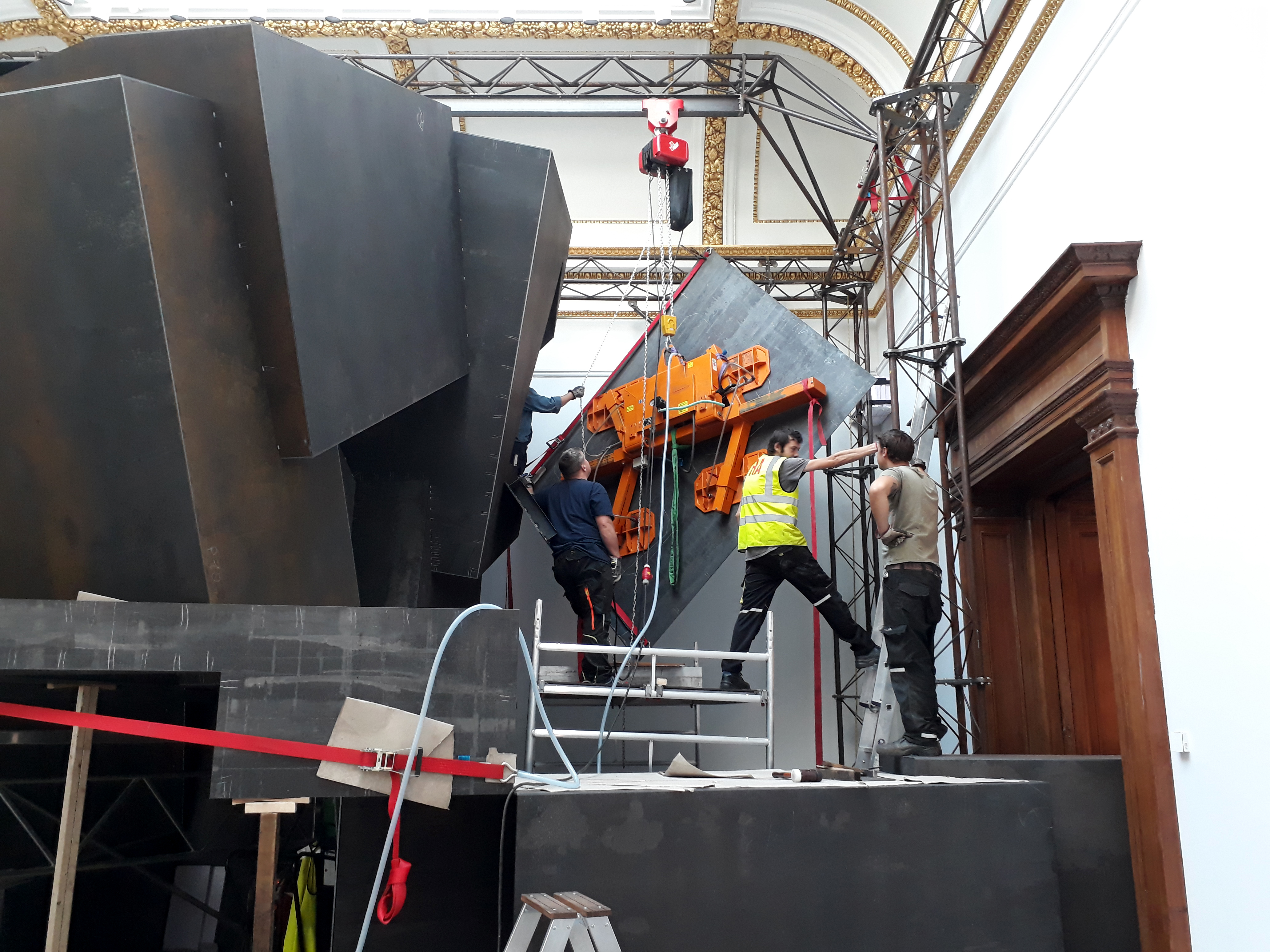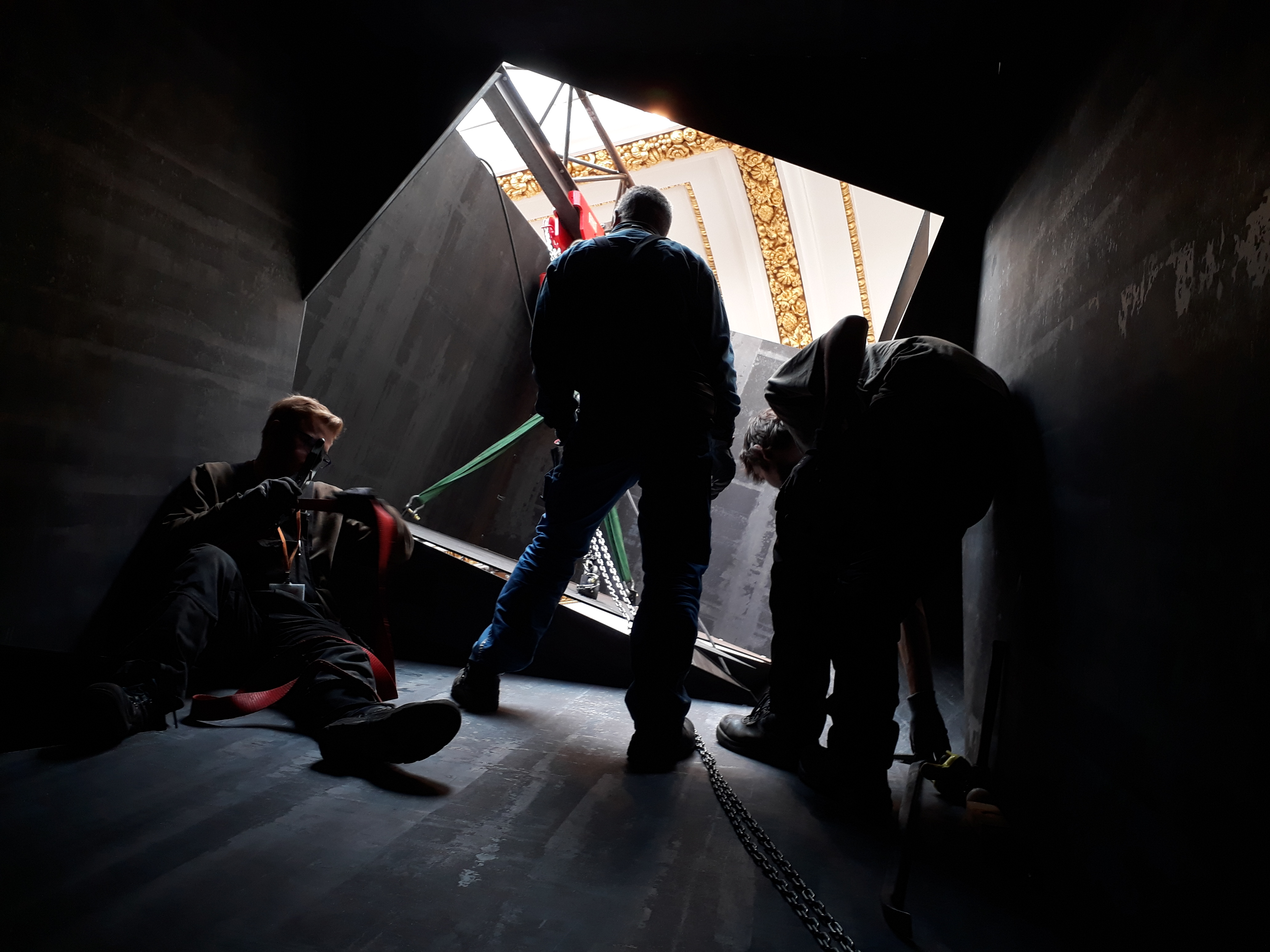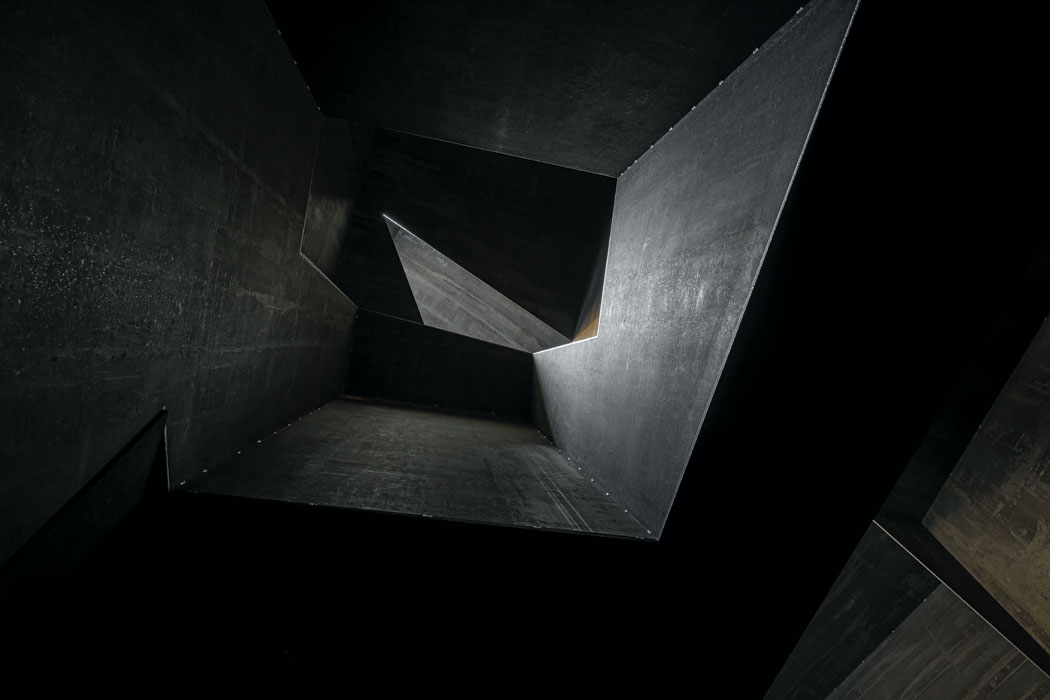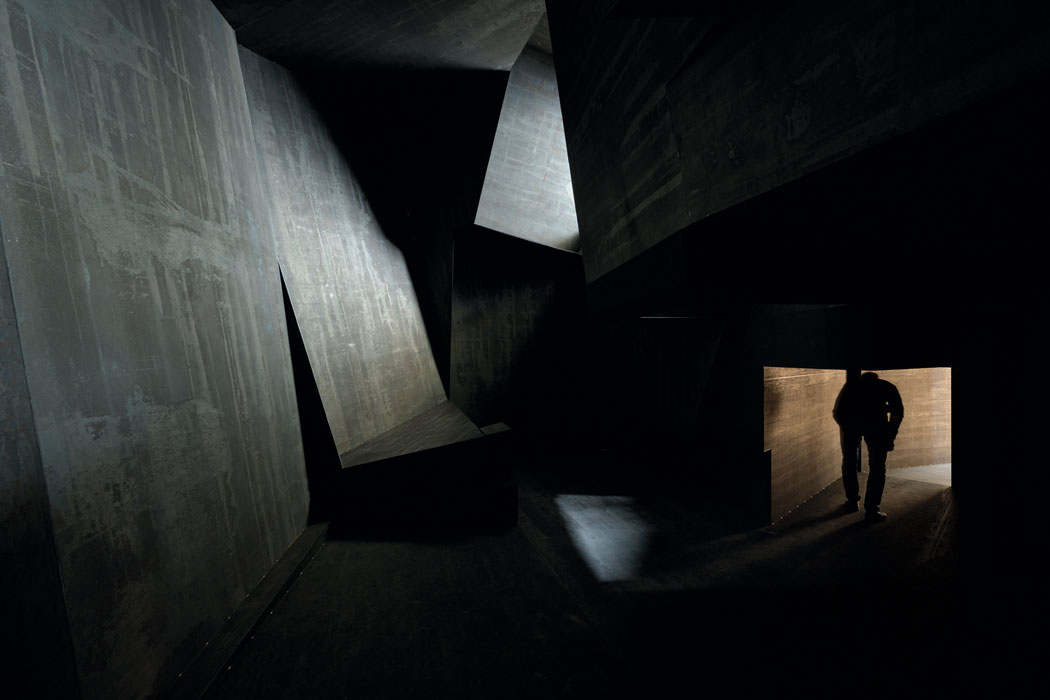CAVE is a vast cluster of cuboid voids with irregular facets, set as if at random angles one to another. Sculpture on the scale of architecture, it fills the space, pressing against the gallery's perimeters […] The co-ordinates of the building - and the sense of stability afforded by the horizontal and vertical of wall and ceiling and floor - are radically disrupted [...] It is impossible to gather in one view; the form, difficult to read given the scale of the work and its position, is of a body, hunched, lying on one side, one knee raised. Its external form can be negotiated, and viewed, in part, from the constricted space between its outer surfaces and the gallery walls. This is the body as building: a foot protrudes through the gallery's doorway; an aperture offers a way in, and the prospect of a slow, careful passage through internal chambers. Entering, you feel your own moving body more deeply, as you try to find your bearings and make your way through the larger body of CAVE. Two facets of the body's surface are open (at the head, and the raised knee) to glimpses of the gallery's cornice and ceiling - and to allow light to fall from above, affording constant interplay of dim illumination and darkness in the cavernous, resonating space - almost subterranean in feel - inside the body. An exit is made, by way of the arm and the hand, to the gallery beyond.
Martin Caiger Smith, edited excerpt from the exhibition catalogue ANTONY GORMLEY, Royal Academy of Arts, London, 2019, p.214


